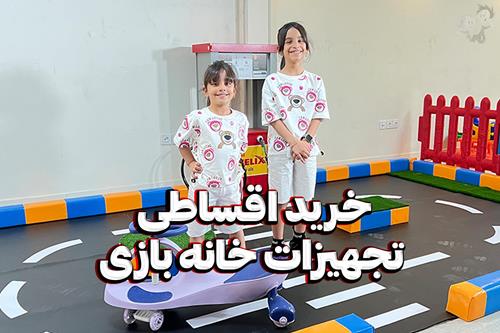




Air hockey on the table is an exciting and fun sport

Introducing the game Hand Speed or Handix

The prominent role of video game consoles in the evolution of amusement parks

Augmented reality in the city of modern games

Park and outdoor products - beauty, safety and entertainment in the field of playground equipment

New playground equipment, a look at the latest technologies in 2024

Kindergarten teacher training complete guide

Kindergarten equipment is a complete guide to providing a safe and educational environment for children

Installment purchase of playhouse and kindergarten equipment, advantages and disadvantages

Kindergarten supplies exchange in Tehran

Kindergarten equipment and supplies
Teaching risk taking to children and teenagers
Teaching children and teenagers to take risks
Teaching children to take risks is one of the other educational issues that should be paid attention to. Risk-taking is a spirit that is formed in a person from childhood and makes him a risk-taker in the future. This moral trait is very important for entrepreneurs and those who seek creativity. They must have the ability to accept risk in business so that more doors are opened for them in their field of activity; But why is teaching risk taking to children brought up? Because according to research, the level of risk taking of young Iranians is very low. Now we have to see how this acquired characteristic can be cultivated in children. If you are interested in this topic, we suggest you read the contents of this article.

What is risk tolerance?
Sometimes people think that risk-taking means taking risks or doing dangerous things. While risk-taking means that a person is 85% sure of the result of his work and does not know the final result. When you give up doing something just because you will fail and be judged by others, it means that your risk tolerance is low. Many people, even though they know that they have the ability to do a large part of the work and the probability of their failure is very low, they still do not take action to do the work.
Can the power of risk-taking be taught?
Risk taking is partly acquired and partly innate. For example, when a young child is faced with high stairs, he turns back after seeing the difference in height. This behavior is attributive. Fear naturally causes him to protect his life; But in the discussion of teaching children to take risks, we do not face such useful fears. If you pay attention, babies and toddlers are not familiar with the concept of danger. It is the experience and upbringing of the parents that leads to his familiarity with these concepts. For example, a toddler has no knowledge of the concept of hot, sharp or such words. When the parents tell the child that the object is hot, he will not understand what the concept of hot is until he touches and experiences it himself. That is why after the first experience, he gets acquainted with the concept of fear, injury and pain.
How to teach our children to take useful risks?
To teach children to take risks, you can use a variety of games and entertainment:
Estimate
Ask your child to estimate the weight or temperature of the object. The child's predictions gradually become more accurate and the fear of making mistakes gives way to self-confidence. For this, you can find a way to express his opinion on any subject. For example, when you want to collect leftover food in smaller containers, ask him which of the lidded containers he thinks will fit this amount of food? Ask older children for more complex tasks. For example, ask him to guess the price of today's purchases.

Encouraging children
When you have assigned a task to your child, if he has successfully completed a large percentage of the task, thank him and encourage him. For example, ask him if he thinks he can handle the dishes. Then try to make it easier for him by accompanying him and making it attractive, such as wearing a colored apron or playing floor. After finishing, use sentences like "Did you see it" or "Thank you for doing this for me".
At what age should we start teaching children to take risks?
It is better to start teaching risk taking to children from the very beginning of childhood. Encourage him to walk, eat, get up, etc. and don't scare him. The most important issue in risk-taking education is parents' fear. Sometimes parents themselves become the cause of their child's cowardice. It is not recommended to stop the child from doing anything. As a parent, you should only stop him when there is serious danger. For example, a toddler touches a hot kettle. In such cases, you must remember to take care of your child, but sometimes the level of sensitivity of parents is very high, and this makes it difficult to educate the child to take risks.

Conclusion
Teaching risk-taking to children and teenagers is one of the important topics of child psychology, which should start from the very early age. Risk taking is a semi-attributable and semi-acquired trait. Fear is a natural feeling that all humans have innately in their minds to some extent since birth; But the discussion of risk-taking education refers to the role of parents in increasing this trait. Many parents are constantly commanding and forbidding their children, unaware that this behavior can cause their children to become fearful. To strengthen the sense of risk-taking in children, it is recommended to use games and interesting entertainment. For example, ask your child to guess how heavy, cold or hot something is. Adult children can estimate the price or other characteristics of an object or agree with you in doing things.




 Category
Category
